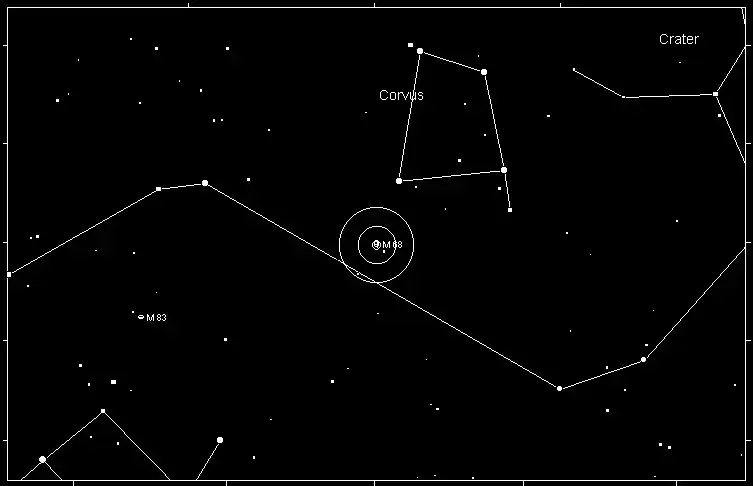Messier 68 (M68) is a globular cluster located in the constellation Hydra. It is a densely packed, spherical collection of stars, bound together by gravity, and one of the many globular clusters cataloged by the French astronomer Charles Messier in the 18th century. This cluster is composed primarily of ancient stars, many of which are low in metals, indicating their formation early in the universe's history. M68 is approximately 33,000 light-years away from Earth and has a diameter of about 106 light-years, making it a substantial but distant object in our galaxy.
The cluster has a visual magnitude of 7.8, which means it is not visible to the naked eye under typical conditions but can be easily observed using binoculars or a small telescope. M68 appears as a round, slightly diffuse spot in the night sky with a densely packed core, which is typical of globular clusters.
Magnitude
Messier 68 shines with a magnitude of 7.8. This brightness makes it visible through small telescopes, though it may require dark skies and good seeing conditions to observe it well. Under these conditions, the core of the cluster can be resolved into individual stars with a moderate-sized telescope, revealing its rich and densely packed stellar population.
Best Season for Observation
M68 is best observed during spring in the Northern Hemisphere, with the optimal viewing period being from March to May. During this time, Hydra is well-placed in the night sky, rising in the southeast and moving across the southern sky as the night progresses.
Constellation
Messier 68 is located in the constellation Hydra, the Water Snake. Hydra is the largest constellation in the sky, though it is not particularly bright, making it somewhat challenging to locate. M68 is situated towards the western part of Hydra, near the border with the constellation Centaurus.
How to Find Messier 68
To locate M68, start by finding the bright star Corvus, which is near the head of the Hydra constellation. Corvus is an easily recognizable quadrilateral-shaped constellation that sits above Hydra. From Corvus, locate the star Algorab (Delta Corvi), and then trace a line southwards to the faint star Hydrae (Alpha Hydrae). M68 is located a little over 2 degrees to the west of Hydrae. Due to its faintness, it is best to use a star chart or a telescope equipped with GoTo technology to precisely locate M68.
When viewed through a telescope, M68 appears as a small, round, and faintly glowing patch. With larger telescopes, more of the cluster’s stars become visible, particularly around the core, where the density is highest.

History
Messier 68 was first discovered by Charles Messier on April 9, 1780, during his search for comet-like objects in the night sky. Messier cataloged M68 as the 68th object in his famous list of "nebulae and star clusters," which has become known as the Messier Catalogue. The catalogue was designed to help comet hunters avoid confusing these deep-sky objects with actual comets.
Over the centuries, M68 has been studied extensively by astronomers. In the 20th century, studies of M68 contributed to our understanding of the population of globular clusters in the Milky Way and their role in the formation and evolution of our galaxy. Modern observations using powerful telescopes and space-based observatories continue to reveal the secrets of this ancient and distant cluster, providing insights into the early history of the universe.
Conclusion
Messier 68 is a fascinating globular cluster located in the constellation Hydra. With a magnitude of 7.8, it offers amateur astronomers a rewarding target in the spring sky. Although it may require some effort to locate, the sight of this ancient star cluster is well worth the time spent. Whether you are a seasoned stargazer or a novice, M68 provides a glimpse into the distant past of our galaxy and the universe.
